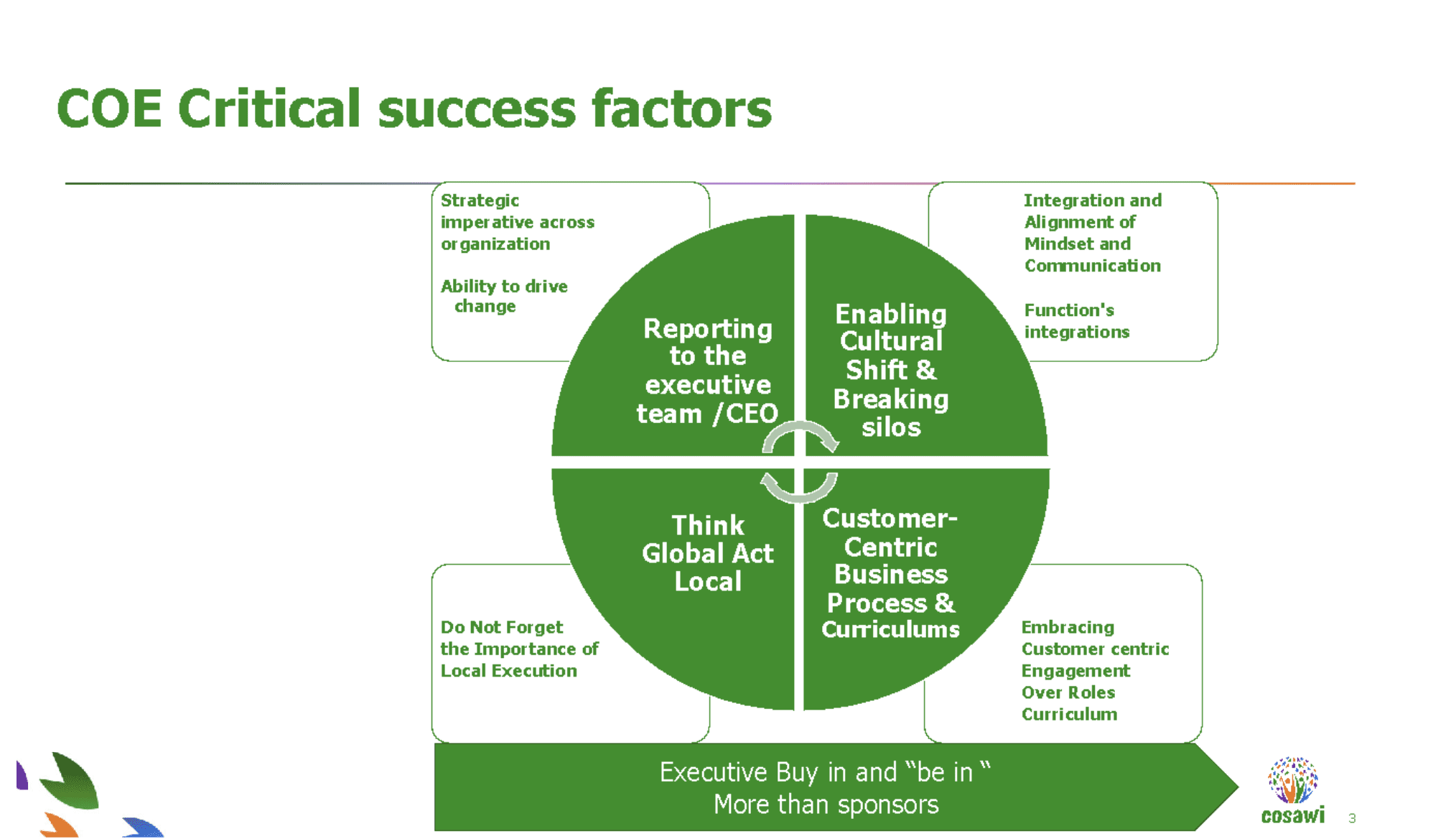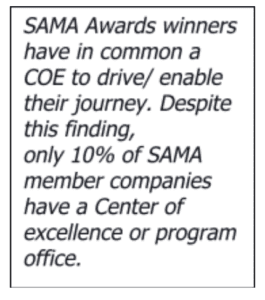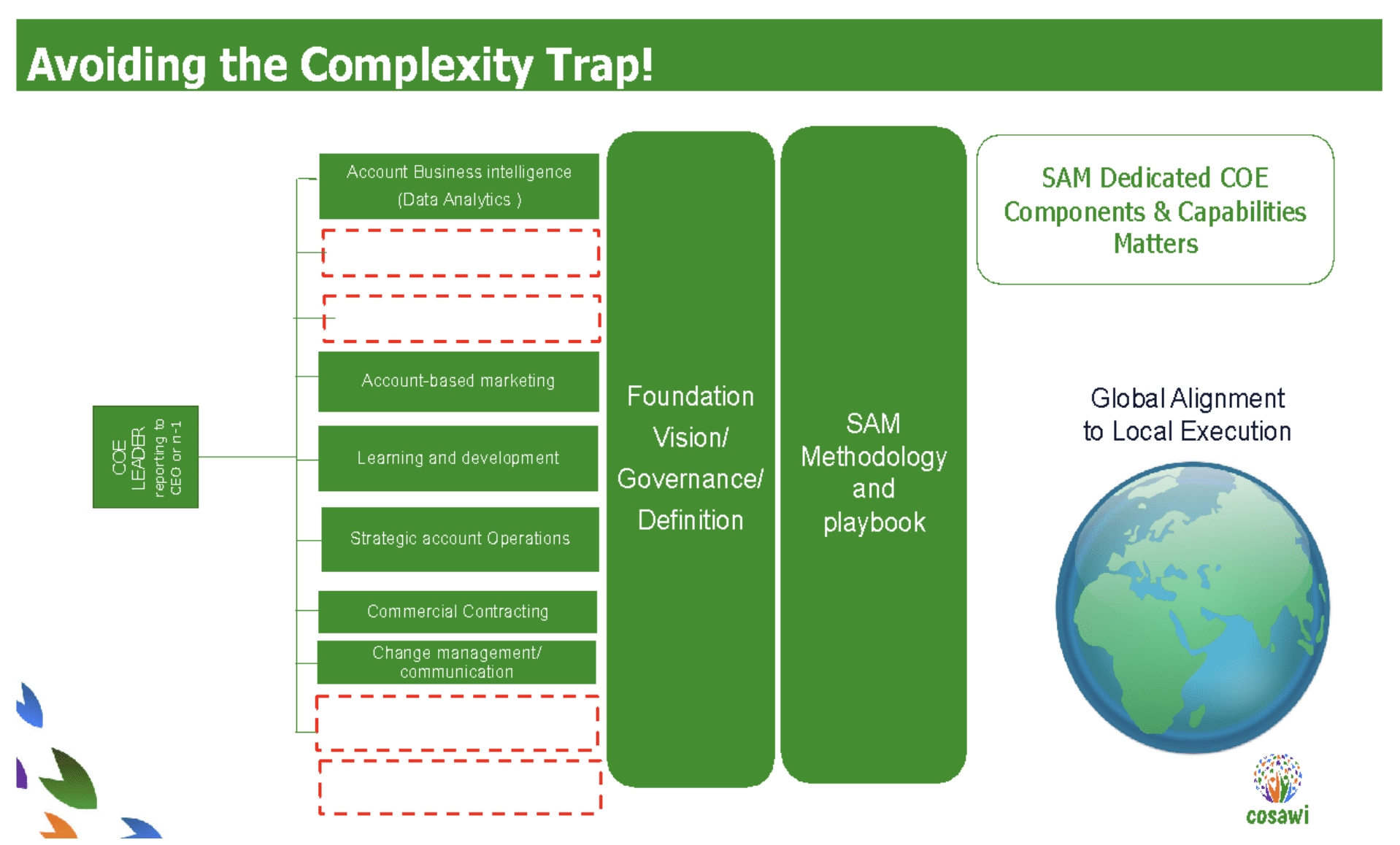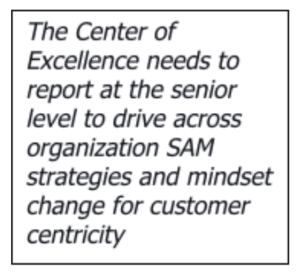Co-authored by Tania Lennon, Global Space Lead, Talent Assessment and Leadership at ZS and Dominique Côté, CEO and Founder, Cosawi and Principal, The Summit GroupSAMA is proud to offer this 3rd article in the 4-part series on the importance of SAM / KAM leadership....

Thinking Globally and acting local
Thinking Globally and Acting Local
The COE creates the fine balance by driving the corporate shift, aligning the vision and mindset and providing an aligned communication and business process while enabling the local groups to focus on customer intimacy and relevant value
In addition to everything we’ve covered above, the global COE is also responsible for connecting global groups within the company to the local affiliates. They are accountable for aligning the organization to the business and strategic account planning processes, as well as connecting and aligning how the strategic accounts engage with the rest of the commercial teams in the markets and local affiliates.
By providing this central leadership and process, they are using the Pareto principles of 80/20% by providing the 80% to enable the local affiliates to customize to their local needs but saving them from having to start from scratch and duplicate efforts. The COE can provide capability and training development as well and help them established their customized Strategic account management roadmap aligned with the global strategy.
In return, local teams can look at their market environments and, from them, prioritize their local roadmaps. The more the marketplace is integrated and features complex customers, the more they will need to move from a transactional sales model to a strategic account management business model. It is by helping the local teams – who are focused on their market and customer understanding, customer journey and decision making – that the Global COE can support localization of the roadmap and prioritise the help and support needed to preserve and enhance local customer intimacy while being the guardian of the “one voice” at the corporate level.
The Global COE can also help foster the creation of communities of practice to exchange on best practice and scale them. These communities help accelerating the SAM journey, connectivity and dissemination of ideas. they can be the anchor point for business case creation, communication and scaling opportunities across the organization.
With one of our clients, a company with a well-established COE we recently helped them customize their role, impact and support investment to the needs of their local affiliate by creating a framework that adapts to the status of the affiliate and focuses on providing a step approach to go from this starting point. This enabled this COE group to clarify and enhance its role while customizing its support to the affiliate market status, needs and capabilities.
Having worked with many organizations in this cultural shift and business transformation, our experience is that without a COE, we find the project and transformation are at significant risks of being derailed by lack of resources, lack of focus or lack of leadership needed to instill the required change.
We have also seen that, in this acceleration of adapting how we do business and how we engage with customer in our new reality, some pillars of the COEs are taking on a front-line role. For example, learning and development investment is increasing in these times when SAMs are working from home and the skills needed in this new environment are shifting.
Conclusion
Finally, when creating your SAM Center of Excellence in line with these critical success factors, your will end up with a COE that spans across the organization, breaking silos and driving the SAM roadmap and journey today and for the future.
It can bring expertise for more customer value and differentiation, which will result in your customer remembering that you care about their success. The COE helps the SAM build trusted partnerships by supporting their processes and needs, focusing on what is important to your customers and enabling customer -facing teams to show up as one organization in a coordinated manner. In short, the COE helps the SAM elevate his and her game.
View the Full PDF Article Here
Recent Posts
KAM Leader Series: Shaping Innovative Solutions
ABM Webinar with Thales
How to integrate marketing into your SAM journey for accelerated impact” We know that Strategic Account Management is a team’s sport, yet marketing is often missing at the Strategic Account table. Listen on how one organisation, Thales, has integrated account...
LinkedIn Live
What is ABM and what is the role of marketing on this new customer centric approach ? Listen to two thought leaders exchange on this topic interviewed by Arpedio Thoughtware is important upstream of platformware READ MORE







 Establishing a COE is the number one most critical success factor for implementing an effective strategic account management business model. Despite this fact, only 10 percent of SAMA member companies have a COE, let alone an effective one.
Establishing a COE is the number one most critical success factor for implementing an effective strategic account management business model. Despite this fact, only 10 percent of SAMA member companies have a COE, let alone an effective one. 
 There is more than one way of doing this. Some organizations start this journey by creating a COE to support the SAM organization as a separate unit with a remit to test, iterate and pilot for speed. They then integrate this with the rest of the commercial group. Others will start with an already commercially integrated COE working across their business units.
There is more than one way of doing this. Some organizations start this journey by creating a COE to support the SAM organization as a separate unit with a remit to test, iterate and pilot for speed. They then integrate this with the rest of the commercial group. Others will start with an already commercially integrated COE working across their business units.  Clients tell us that, in most cases, their internal organizations are more challenging to navigate than their customer organizations and often present sthe most significant barriers to action and partnership with strategic accounts.
Clients tell us that, in most cases, their internal organizations are more challenging to navigate than their customer organizations and often present sthe most significant barriers to action and partnership with strategic accounts. 
